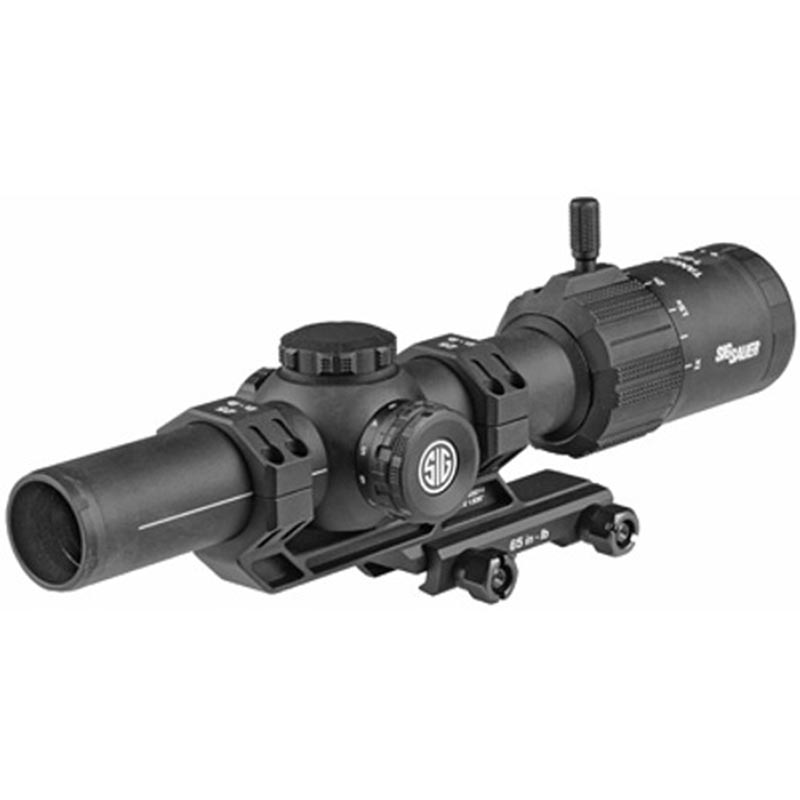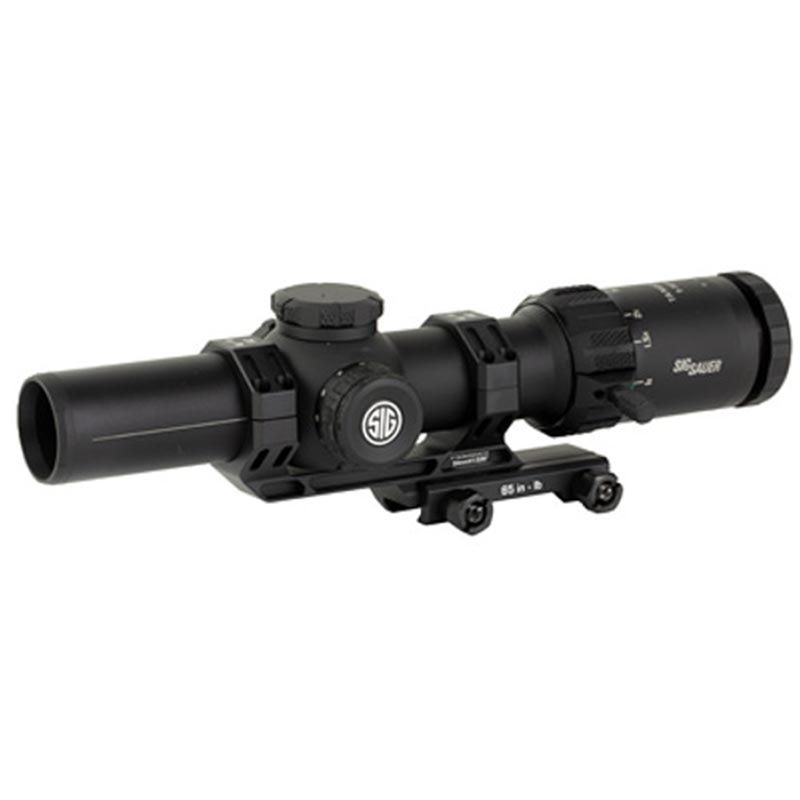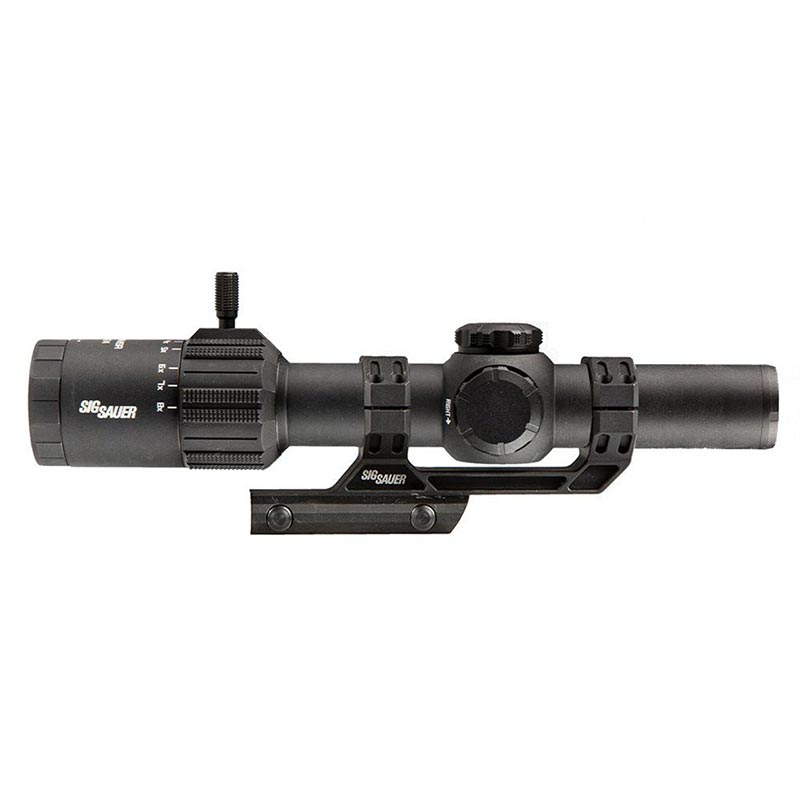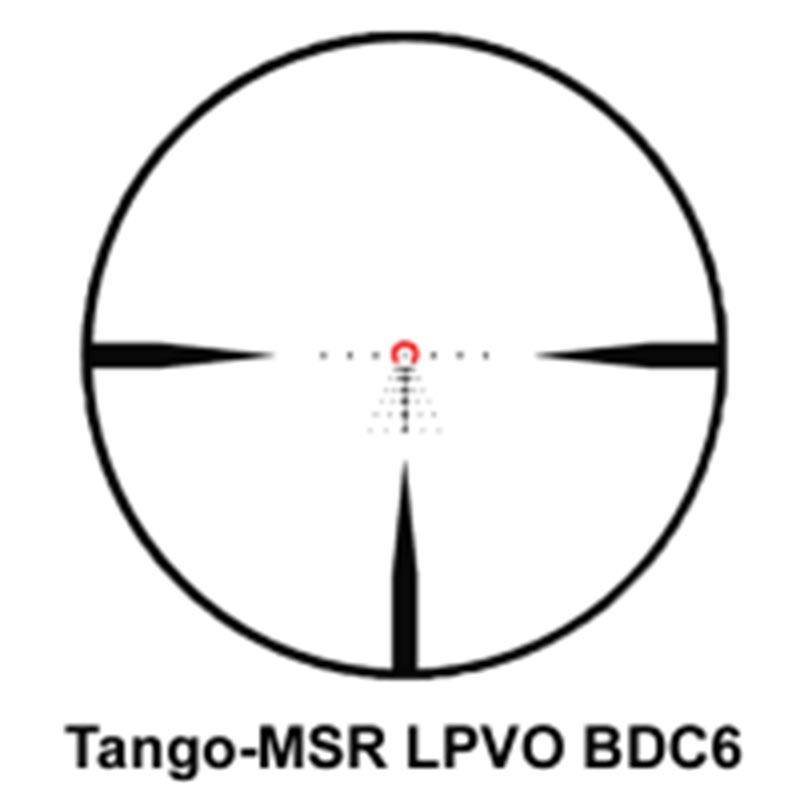

Sig Sauer Tango MSR 1-8x24 30mm SOTM81000 Riflescope is engineered for accuracy in close to mid-range tactical scenarios and hunting. Offering superior light transmission, this Low Power Variable Optic (LPVO) enhances your ability to lock onto targets quickly. With a lightweight yet robust 30mm maintube, it is waterproof, shockproof, and fog-proof, ensuring reliable performance regardless of weather conditions.
This riflescope features an illuminated reticle with 11 brightness settings for optimal visibility in diverse lighting. The integrated thread-in throw lever allows for fast magnification adjustments, improving your targeting speed. With the Tango MSR, you gain a dependable companion designed for precision shooting, whether in competitive environments or during outdoor adventures.
Key Features:
- HIGH PERFORMANCE for close to mid-range tactical engagements.
- DURABLE CONSTRUCTION with a compact, lightweight 30mm maintube.
- SUPERIOR CLARITY with an illuminated reticle and low dispersion glass.
- QUICK MAGNIFICATION change with integrated thread-in throw lever.
- PROTECTIVE ACCESSORIES including lay flat flip-back lens covers.
- SECURE MOUNTING with a one-piece aluminum cantilever mount included.
- VERSATILE USAGE for tactical engagements, competitions, and hunting.
- SIG SAUER HERITAGE ensuring rugged design and ultimate durability.
Technical Specifications Table
| Brand | Sig Sauer |
| Color | Black |
| Style | Tactical Riflescope |
| Dimensions | 14.5 x 4 x 4 inches |
| Weight | 2 Pounds |
| Material | Aluminum |
| Magnification | 1-8x |
| Objective Lens Diameter | 24 Millimeters |
| Mounting Type | Cantilever Mount |
What’s in the Box?
- Lay flat flip-back lens covers
- One-piece aluminum cantilever mount
Customer Reviews
"The clarity in low light is incredible! This scope has improved my shooting accuracy significantly." - John D.
"Fast adjustments and solid construction make this my go-to scope for all my hunts." - Emily R.
FAQ
How does the Tango MSR compare to other scopes for long-range optics? The Tango MSR is specifically designed for versatility, providing both close and mid-range capabilities, setting it apart from traditional long-range scopes.
Is the Sig Sauer Tango MSR suitable for beginners? Absolutely! Its intuitive design and quick magnification adjustments make it user-friendly while still meeting the demands of advanced users.
Similar Models
If you’re considering the Tango MSR, explore our range of Sig Sauer products. For instance, check out the Sig Sauer Tango 4 6-24x50 for enhanced long-range optics or the Sig Sauer Whiskey 3 3-9x40 for a more compact option. Discover the full collection today for exceptional optical solutions tailored to your adventures.
You May Also Like
Here’s some of our most similar products people are buying. Click to discover trending style.









